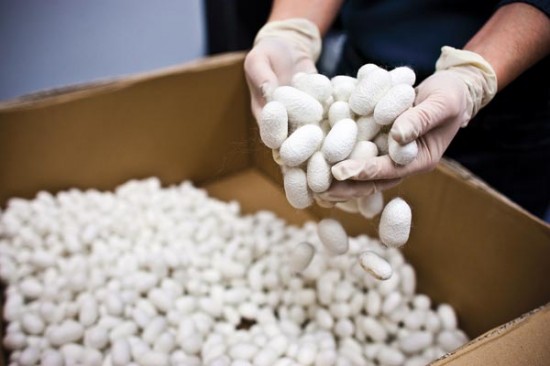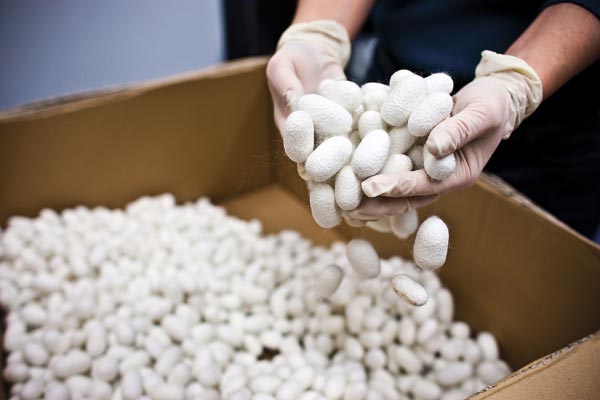Rewriting Life
How Cocoons Are Turned Into Optical Devices
A simple process turns cocoons into optical devices with biological applications.

Researcher Carmen Preda scoops up silkworm cocoons, the starting material for the biodegradable devices. The cocoons must be cut open and the dead worms inside them discarded.
